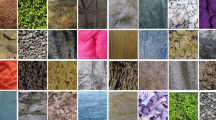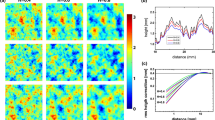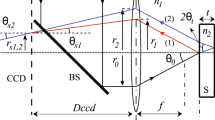Abstract
THE use of transparent replicas is a convenient method for the microscopic study of surfaces. Perfectly dry structures can be replicated with plastic substances such as ‘Collodion’, ‘Formvar’ or methacrylate, but a serious disadvantage to the general use of these materials is that they ‘mist’ when allowed to harden in a moist atmosphere. Accordingly, they cannot be used satisfactorily with specimens that either become distorted when dry or, like many biological specimens, have a naturally wet surface. The following method, which overcomes this difficulty, consists essentially of taking a primary impression of the surface with a silicone rubber plastic and using this to form secondary transparent replicas.
This is a preview of subscription content, access via your institution
Access options
Subscribe to this journal
Receive 51 print issues and online access
$199.00 per year
only $3.90 per issue
Buy this article
- Purchase on Springer Link
- Instant access to full article PDF
Prices may be subject to local taxes which are calculated during checkout
Similar content being viewed by others
Author information
Authors and Affiliations
Rights and permissions
About this article
Cite this article
SAMPSON, J. A Method of replicating Dry or Moist Surfaces for Examination by Light Microscopy. Nature 191, 932–933 (1961). https://doi.org/10.1038/191932a0
Issue Date:
DOI: https://doi.org/10.1038/191932a0
This article is cited by
-
Effect of soil temperature on the morphological and physiological traits of Kandelia obovata seedlings
Plant Ecology (2023)
-
Impacts of glyphosate-based herbicide on leaf stomatal density and biomass production of transgenic soybean (Glycine max [L.] Merr.) and corn (Zea mays L.)
Acta Physiologiae Plantarum (2023)
-
Improved micropropagation of Gypsophila paniculata with bioreactor and factors affecting ex vitro rooting in microponic system
In Vitro Cellular & Developmental Biology - Plant (2013)
-
Effect of vessel type and growth regulators on micropropagation of Capsicum annuum
Biologia plantarum (2011)
-
Shoot multiplication kinetics and hyperhydric status of regenerated shoots of gladiolus in agar-solidified and matrix-supported liquid cultures
Plant Biotechnology Reports (2010)
Comments
By submitting a comment you agree to abide by our Terms and Community Guidelines. If you find something abusive or that does not comply with our terms or guidelines please flag it as inappropriate.



